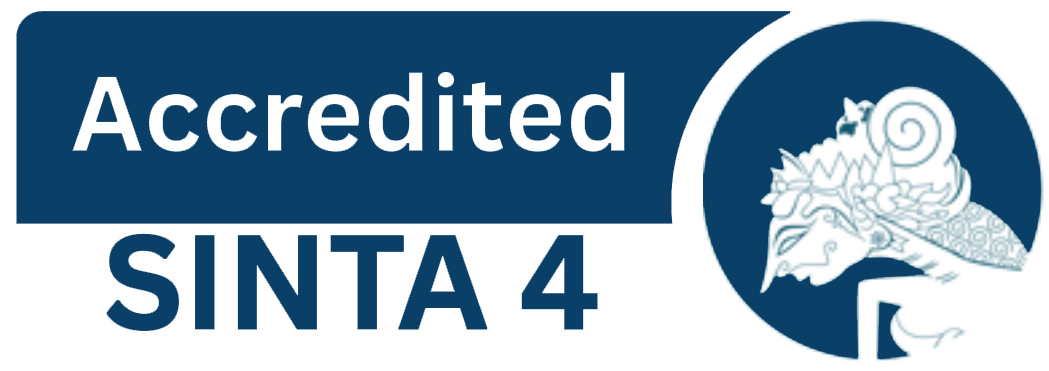ANALISIS TREND TOPIK PENELITIAN PENDIDIKAN DAN PENGAJARAN PADA JURNAL INTERNASIONAL BERIPUTASI Q1 PRIODE 2020-2021
DOI:
https://doi.org/10.22460/p2m.v9i1.3107Keywords:
Jurnal Q1, Tren topik penelitian, Pendidikan dan Pembelajaran.Abstract
Kehadiran penelitian ini bertujuan untuk mencari informasi tentang tren topik penelitian dari sumber data yang ada, terutama tren topik di bidang pendidikan dan pengajaran. Metode penelitian yang digunakan adalah deskriptif kualitatif dengan pendekatan Systemic Literature Review. Instrumen yang digunakan adalah website https://www.scimagojr.com dan https://www.scopus.com. Subyek penelitian adalah jurnal yang terindeks Scopus Q1 dari SCImago & Scopus Preview untuk menentukan posisi atau level tinggi dan rendah suatu jurnal. Hasil kajian data penelitian ini menunjukkan sebanyak 25.231 jurnal dari semua aspek kategori, sedangkan pada kategori pendidikan terdapat 1.274 jurnal dengan 10 jurnal terpilih sebagai subjek penelitian yang dimiliki. Ke-10 jurnal tersebut memiliki 1.230 artikel. Oleh karena itu, tren topik dalam 2 tahun terakhir adalah tren topik penelitian tentang diskusi dengan guru di posisi pertama dengan 380 artikel yang diterbitkan. Kedua, 220 topik artikel membahas siswa dalam pembelajaran. Ketiga, 186 topik artikel membahas strategi dalam pembelajaran. Keempat, 168 topik artikel membahas metode pembelajaran dalam pendidikan. Kelima, 153 artikel dengan topik pembahasan penilaian dalam pembelajaran di dunia pendidikan. Keenam, 13 topik dalam artikel membahas kurikulum pendidikan.References
Bhagat, S. K., Tung, T. M., & Yaseen, Z. M. (2020). Development of artificial intelligence for modeling wastewater heavy metal removal: State of the art, application assessment and possible future research. Journal of Cleaner Production, 250. https://doi.org/10.1016/j.jclepro.2019.119473
Biesta, G., Takayama, K., Kettle, M., & Heimans, S. (2020). Call for papers: A new agenda for teacher education research. Asia-Pacific Journal of Teacher Education, 48(5), 460–462. https://doi.org/10.1080/1359866x.2020.1818484
Borges, A. F. S., Laurindo, F. J. B., SpÃnola, M. M., Gonçalves, R. F., & Mattos, C. A. (2021). The strategic use of artificial intelligence in the digital era: Systematic literature review and future research directions. International Journal of Information Management, 57(December 2019), 102225. https://doi.org/10.1016/j.ijinfomgt.2020.102225
Bozkurt, A., Akgun-Ozbek, E., Yilmazel, S., Erdogdu, E., Ucar, H., Guler, E., Sezgin, S., Karadeniz, A., Sen-Ersoy, N., Goksel-Canbek, N., Dincer, G. D., Ari, S., & Aydin, C. H. (2015). Trends in distance education research: A content analysis of journals 2009-2013. International Review of Research in Open and Distance Learning, 16(1), 330–363. https://doi.org/10.19173/irrodl.v16i1.1953
Carless, D. (2020). Longitudinal perspectives on students’ experiences of feedback: a need for teacher–student partnerships. Higher Education Research and Development, 39(3), 425–438. https://doi.org/10.1080/07294360.2019.1684455
Chen, X., Zou, D., Cheng, G., & Xie, H. (2020). Detecting latent topics and trends in educational technologies over four decades using structural topic modeling: A retrospective of all volumes of Computers & Education. Computers and Education, 151(September 2019), 103855. https://doi.org/10.1016/j.compedu.2020.103855
da Costa, D. A. (2020). Knowledge to Teach and Knowledge for Teaching in Teacher Education Research. Pedagogical Research, 5(3), 3–9. https://doi.org/10.29333/pr/7936
Daenekindt, S., & Huisman, J. (2020). Mapping the scattered field of research on higher education. A correlated topic model of 17,000 articles, 1991–2018. Higher Education, 80(3), 571–587. https://doi.org/10.1007/s10734-020-00500-x
Donthu, N., Kumar, S., & Pattnaik, D. (2021). Intellectual structure and publication pattern in International Journal of Advertising: a bibliometric analysis during 1982–2019. International Journal of Advertising, 40(2), 148–174. https://doi.org/10.1080/02650487.2020.1756655
Donthu, N., Reinartz, W., Kumar, S., & Pattnaik, D. (2021). A retrospective review of the first 35 years of the International Journal of Research in Marketing. International Journal of Research in Marketing, 38(1), 232–269. https://doi.org/10.1016/j.ijresmar.2020.10.006
Englund, C., Olofsson, A. D., & Price, L. (2017). Teaching with technology in higher education: understanding conceptual change and development in practice. Higher Education Research and Development, 36(1), 73–87. https://doi.org/10.1080/07294360.2016.1171300
Gómez-Núñez, A. J., Batagelj, V., Vargas-Quesada, B., Moya-Anegón, F., & Chinchilla-RodrÃguez, Z. (2014). Optimizing SCImago Journal & Country Rank classification by community detection. Journal of Informetrics, 8(2), 369–383. https://doi.org/10.1016/j.joi.2014.01.011
Gumus, S., Bellibas, M. S., Esen, M., & Gumus, E. (2018). A systematic review of studies on leadership models in educational research from 1980 to 2014. Educational Management Administration and Leadership, 46(1), 25–48. https://doi.org/10.1177/1741143216659296
Hammond, J. W., Moss, P. A., Huynh, M. Q., & Lagoze, C. (2020). Research Synthesis Infrastructures: Shaping Knowledge in Education. Review of Research in Education, 44(1), 1–35. https://doi.org/10.3102/0091732X20907350
Hanid, M. F. A., Mohamad Said, M. N. H., & Yahaya, N. (2020). Learning strategies using augmented reality technology in education: Meta-analysis. Universal Journal of Educational Research, 8(5 A), 51–56. https://doi.org/10.13189/ujer.2020.081908
Hapsari, A. (2019). Implementasi Pendekatan Multiliterasi untuk Pengajaran Membaca dan Menulis Berbahasa Inggris di Matakuliah Reading and Writing for Occupational Purposes. Refleksi Pembelajaran Inovatif, 1(1), 49–66. https://doi.org/10.20885/rpi.vol1.iss1.art5
Head, G. (2020). Ethics in educational research: Review boards, ethical issues and researcher development. European Educational Research Journal, 19(1), 72–83. https://doi.org/10.1177/1474904118796315
Pane, A., & Darwis Dasopang, M. (2017). Belajar Dan Pembelajaran. FITRAH:Jurnal Kajian Ilmu-Ilmu Keislaman, 3(2), 333. https://doi.org/10.24952/fitrah.v3i2.945
Paul, M., & Girju, R. (2009). Topic modeling of research fields: An interdisciplinary perspective. International Conference Recent Advances in Natural Language Processing, RANLP, 337–342.
Rusydiana, A. S. (2020). Studi Literatur Riset Ekonomi dan Keuangan Islam dalam Jurnal Terindeks Scopus Q1. Al-Muzara’Ah, 8(1), 39–56. https://doi.org/10.29244/jam.8.1.39-56
Sugiyono. (2014). Metode Penelitian Kuantitatif, Kualitatif, dan Tindakan. ALFABETA. CV. Bandung.
Summers, R. J., Higson, H. E., & Moores, E. (2021). Measures of engagement in the first three weeks of higher education predict subsequent activity and attainment in first year undergraduate students: a UK case study. Assessment and Evaluation in Higher Education, 46(5), 821–836. https://doi.org/10.1080/02602938.2020.1822282
Susilo, A., & Sarkowi, S. (2018). Peran Guru Sejarah Abad 21 dalam Menghadapi Tantangan Arus Globalisasi. Historia: Jurnal Pendidik Dan Peneliti Sejarah, 2(1), 43. https://doi.org/10.17509/historia.v2i1.11206
Transfer, T., Identifier, D. O., Document, E., Transfer, T., Rights, P., Journal, T., & Transfer, T. (2019). Edinburgh Research Explorer A systematic literature review on accelerators Citation for published version (Vol. 46, Issue 1).
Tsai, C. C., & Wen, M. L. (2005). Research and trends in science education from 1998 to 2002: A content analysis of publication in selected journals. International Journal of Science Education, 27(1), 3–14. https://doi.org/10.1080/0950069042000243727
Yin, H., & Huang, S. (2021). Applying structural equation modelling to research on teaching and teacher education: Looking back and forward. Teaching and Teacher Education, 107(xxxx), 103438. https://doi.org/10.1016/j.tate.2021.103438
Yu, Z., & Menzies, T. (2017). Data balancing for technologically assisted reviews: Undersampling or reweighting. Journal of Baltic Science Education, 1866, 388–400.


















